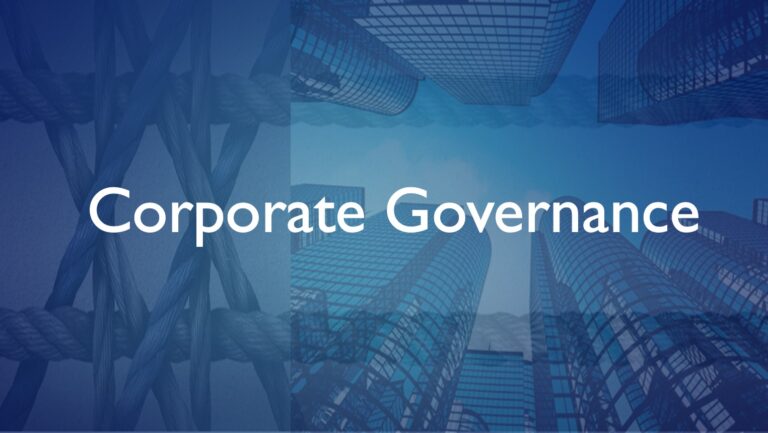Corporate governance is no longer just about compliance checklists or quarterly reporting. By 2025, the conversation has shifted toward resilience, transparency, and adaptability. Boards are facing intense scrutiny from investors, employees, and regulators, and companies that fail to adjust risk face more than just reputational damage.
Key highlights readers should note:
- Shareholder expectations are pushing governance reform.
- ESG integration continues to reshape boardroom priorities.
- Digital oversight is becoming a governance issue, not just an IT one.
- Independent voices like non-executive directors are more vital than ever.
- Regulatory complexity demands proactive, not reactive, compliance.
Why Corporate Governance Feels Different in 2025

A decade ago, governance was mainly about satisfying regulators and shareholders. In 2025, it’s a balancing act: stakeholder demands, digital disruption, and global uncertainty collide in the boardroom. Boards are expected to guide long-term value creation, protect corporate reputation, and anticipate risks, sometimes all in the same meeting.
The pressure is real. CEOs are increasingly judged not only on financial performance but also on ethical leadership and sustainability practices. Governance is the lens through which both success and failure are judged, making it a frontline issue rather than a background process.
The Expanding Role of Non-Executive Directors

One of the clearest shifts is the reliance on non-executive directors to bring independence and fresh oversight. Boards are finding value in directors who can question assumptions, bring diverse sector experience, and challenge groupthink.
For companies navigating growth or restructuring, using a trusted non-executive director search process ensures the right expertise is found. These directors often provide more than oversight; they act as mentors to CEOs, guardians of governance standards, and connectors to investor expectations.
In 2025, the demand for non-executive directors is rising sharply, with skill sets in digital risk, ESG integration, and cross-border compliance topping the list.
Technology Oversight as a Governance Priority
Gone are the days when cybersecurity was considered a “technical” issue. Data breaches, AI ethics, and algorithm accountability are all now front-and-center board concerns. Investors and regulators expect boards to not only monitor IT budgets but also understand how technology decisions affect business models, compliance, and trust.
Key areas where boards are stepping in:
- Cybersecurity resilience: Ensuring proactive monitoring and response frameworks.
- AI governance: Addressing bias, transparency, and regulatory alignment.
- Data privacy: Preparing for stricter global data-protection regimes.
The ability of directors to bridge strategy and technology is becoming a critical competitive advantage.
ESG Governance: Beyond the Buzzwords

Environmental, Social, and Governance (ESG) factors have matured beyond checkboxes. Investors no longer accept vague sustainability reports, they want measurable action. Boards are under pressure to embed ESG into corporate strategy and disclose progress in ways that are both transparent and verifiable.
A mini-table illustrates how ESG reporting expectations have shifted by 2025:
| ESG Focus Area | Old Approach | 2025 Expectation |
| Environment | Broad statements | Data-driven targets & carbon accounting |
| Social | Philanthropy | Workforce equity, DEI metrics, supply chain audits |
| Governance | Compliance | Integrated risk management, board diversity transparency |
This sharper lens means governance is inseparable from ESG credibility.
Shareholder and Stakeholder Activism
Shareholders are no longer passive observers. Activist investors, employee advocacy groups, and even consumers are holding boards accountable for their decisions. In 2025, companies that try to “manage” stakeholders with vague communication find themselves quickly exposed.
Boards must develop structured engagement strategies:
- Regular investor dialogues beyond AGMs.
- Transparent reporting on risk, ESG, and executive compensation.
- Proactive response to employee activism on diversity, pay equity, and working conditions.
The message is clear: governance that doesn’t consider stakeholder voices is governance at risk.
Diversity as a Performance Metric
Diversity in governance has moved from “nice to have” to a measurable performance driver. Multiple studies confirm that diverse boards outperform homogeneous ones on innovation and risk management. Regulators in Europe and North America are mandating minimum thresholds for gender and ethnic representation at the board level, pushing companies to act decisively.
But diversity is no longer about optics. Boards are prioritizing inclusion of directors with lived experience across industries, demographics, and geographies. This creates more resilient discussions, better scenario planning, and strategies that actually reflect customer realities.
Compliance in a Multi-Jurisdictional World
Regulation in 2025 is a puzzle: EU sustainability rules, U.S. data-privacy frameworks, Asian financial disclosure requirements. Multinationals can no longer manage governance with a single-country mindset.
Did you know? According to the OECD, over 50% of global companies now face at least three major overlapping governance reporting obligations annually.
This complexity is forcing boards to adopt a proactive compliance culture. Rather than scrambling to meet deadlines, governance frameworks are shifting toward anticipation, scenario planning, global policy alignment, and real-time monitoring tools.
Boardroom Dynamics: The CEO-Chair Balance
Another undercurrent in 2025 governance is how power is distributed between the CEO and the chair. In companies where the two roles are still combined, investors are increasingly questioning independence. The separation of powers trend is strengthening, allowing chairs to act as effective counterweights and facilitators of constructive debate.
When the CEO dominates board discussions, blind spots emerge. Strong chairs ensure that non-executive directors and committees have real influence, creating healthier boardroom cultures that align strategy with governance obligations.
Transparency as the New Currency of Trust
The final trend tying everything together is transparency. Companies that openly disclose risks, governance challenges, and board decision-making processes are building trust faster than those hiding behind vague reports. Transparency reduces speculation, reassures investors, and demonstrates accountability.
Boards in 2025 are adopting practices like:
- Publishing detailed board skills matrices.
- Disclosing succession planning for key leadership roles.
- Reporting failures and corrective actions as openly as successes.
This “radical transparency” is quickly becoming the default expectation.
Governance as Strategy, Not Obligation

Corporate governance in 2025 is no longer a slow-moving compliance process. It’s strategy, reputation, and risk management rolled into one. Boards are being reshaped by activism, digital oversight, ESG accountability, and global regulatory webs. Non-executive directors, diverse representation, and transparent reporting are not optional; they’re survival tools.
For leaders, the key is recognizing that governance has become a driver of competitive advantage. The best boards will be those that treat governance as a living system, dynamic, inclusive, and forward-looking, rather than as a set of static rules.

